#GreenBuildingTechnology
Explore tagged Tumblr posts
Text
The Future of Cold Storage Warehouses: Automation, AI, and Beyond
In a world that's continually advancing, the future of cold storage warehouses is being shaped by cutting-edge technologies. These innovations not only improve efficiency and sustainability but also redefine how we think about preserving perishable goods. EPACK Prefab, a leading manufacturer and supplier, is at the forefront of this transformation, spearheading the adoption of automation, AI, and other groundbreaking solutions in cold storage warehouse construction.

The Evolution of Cold Storage Warehouses
Cold storage warehouses have long been vital for preserving and distributing temperature-sensitive products, from fresh produce to pharmaceuticals. In earlier times, cold storage warehouses were essentially spacious, heavily insulated enclosures fitted with refrigeration systems. Nevertheless, with the advancement of technology, our ability to transform these facilities into more efficient and effective spaces has significantly expanded.
The Role of Automation
Automation is one of the most significant advancements in the cold storage industry. Automated systems are capable of optimizing various processes within the warehouse, from goods reception and placement to retrieval and dispatch. This not only reduces the need for manual labor but also enhances the precision of operations.
EPACK Prefab's Automation Expertise
EPACK Prefab has embraced automation in the design and construction of cold storage warehouses. They understand that automated systems can significantly reduce operational costs, improve inventory management, and enhance overall efficiency. Their expertise in integrating automation technologies into warehouse design is revolutionizing the industry.
The Power of AI and Machine Learning
Artificial intelligence (AI) and machine learning are increasingly being harnessed to make cold storage warehouses smarter. These technologies can predict temperature fluctuations, detect equipment malfunctions before they occur, and optimize energy consumption. In essence, they provide a level of proactive management that was previously impossible.
Sustainability as a Driving Force
As the world confronts pressing environmental issues, sustainability emerges as a pivotal aspect in shaping the future of cold storage. The refrigeration systems within these facilities are undergoing a transformation towards greater energy efficiency and eco-friendliness. EPACK Prefab is unwavering in its commitment to constructing cold storage warehouses that incorporate sustainable technologies. These not only contribute to reducing their environmental impact but also translate into enduring cost savings for their clients.
The Future of Cold Storage Warehouses with EPACK Prefab
EPACK Prefab's dedication to innovation and quality makes them a natural leader in the construction of cold storage warehouses that are ready for the future. Their commitment to integrating automation, AI, and sustainable solutions ensures that clients receive state-of-the-art facilities that meet the demands of a rapidly evolving industry.
Whether it's automated retrieval systems, smart monitoring and control, or energy-efficient refrigeration, EPACK Prefab is equipped to provide clients with the latest technological advancements. Their team of experts collaborates closely with clients to design and construct cold storage warehouses that are tailored to their specific requirements.
Also Read: PRE ENGINEERED COLD STORAGE ROOMS – COST EFFECTIVE AND QUICK TO BUILD!
The future of cold storage warehouses is being shaped by automation, AI, sustainability, and an unwavering commitment to innovation. EPACK Prefab, as a top manufacturer and supplier, is leading the way by integrating these technologies into their construction projects. The result is a new generation of cold storage warehouses that are more efficient, eco-friendly, and prepared to meet the demands of a changing world.
Under the leadership of EPACK Prefab, the outlook for the future of cold storage warehouses is bright, guaranteeing the continued delivery of perishable goods to consumers in impeccable condition, all while diminishing our environmental footprint.
#ColdStorageSolutions#PEBColdStorage#EfficientColdStorage#GreenBuildingTechnology#PEBConstruction#SmartColdStorage#ColdChainLogistics#EPACKPrefab#PEBSolution#SteelStructure
0 notes
Text
Green Building Technologies enables Energy-Efficient Construction
Green building technology involves sustainable construction practices and energy-efficient design that aim to reduce a building’s environmental impact and operational costs. In fact, green buildings typically use 25% less energy than conventional buildings, resulting in substantial carbon emissions reductions. Hence, this approach is essential for creating structures that are functional, durable and resource-efficient. These technologies encompass innovative practices that minimize waste, reduce greenhouse gas emissions, and promote the use of renewable resources.
As reported by the International Energy Agency (IEA), building operations account for 30% of the world’s final energy consumption and 26% of energy-related emissions, with 8% stemming directly from buildings and 18% from the production of electricity and heat used in these structures. Consequently, the adoption of green building technologies is gaining momentum globally due to their substantial environmental, economic, and social benefits. In this regard, certification programs like LEED (Leadership in Energy and Environmental Design) and BREEAM (Building Research Establishment Environmental Assessment Method) set stringent standards for green building practices, focusing on reducing emissions, conserving resources, and enhancing community well-being.
The United Nations Environment Programme (UNEP) also emphasizes that the buildings and construction sector is the largest contributor to greenhouse gas emissions, accounting for 37% of global emissions. The production and use of materials such as cement, steel, and aluminum play a significant role in the sector’s carbon footprint. To address the urgent need for carbon footprint reduction, adopting sustainable construction practices has become critical.

What are the different types of Green Building Technologies?
Green building technologies are transforming the construction and facility management industries by providing innovative solutions to improve the quality of life for occupants.
Smart Building Management Systems: These systems leverage sensors, data analytics, and automation to optimize building performance and energy efficiency. Through this, they enable facility managers to improve operational efficiency and reduce a building’s carbon footprint. Integrating IoT and AI has revolutionized facility management by offering predictive maintenance, energy optimization, and enhanced occupant comfort.
Energy-Efficient HVAC Systems: HVAC systems are among the largest energy consumers in buildings. Modern technologies like variable refrigerant flow (VRF) systems and energy recovery ventilators (ERVs) minimize energy consumption while maintaining indoor air quality, using advanced sensors and controls to adjust heating and cooling based on real-time demand.
Renewable Energy Integration: Incorporating renewable energy sources, such as solar panels, wind turbines, and geothermal systems, into building designs is critical for green building technology to reduce reliance on fossil fuels.
Green Roofs and Vertical Gardens: These features offer environmental benefits like reducing the urban heat island effect, improving insulation, managing stormwater, and enhancing air quality. They also support urban biodiversity by creating habitats for various species.
Advanced Insulation Materials: Innovative materials like aerogels, vacuum-insulated panels (VIPs), and phase-change materials (PCMs) improve a building’s thermal performance, minimize energy consumption, reduce the need for heating and cooling, and enhance overall energy efficiency.
Energy and Water Efficiency in Green Buildings
Heating and cooling systems account for about 43% of all energy use in the US, significantly contributing to air pollution and greenhouse gas emissions. Improving energy efficiency in green buildings reduces these emissions and decreases indoor air pollutants, which are linked to serious health issues. LEED projects are particularly effective in decreasing indoor air pollutants, achieving an average ENERGY STAR score of 89 out of 100. In a study of 7,100 certified construction projects, over 90% improved energy performance by at least 10%.
Water efficiency is another critical focus of green buildings. Buildings account for 12% of total water consumption, with the average person using 80-100 gallons of water per day. Green buildings reduce water use through efficient plumbing fixtures, promote rainwater capture, and utilize non-potable water sources. These efforts help conserve water and reduce strain on local supplies. Additionally, LEED projects have diverted over 80 million tons of waste from landfills, with this number expected to grow to 540 million tons by 2030.
Thus, the implementation of energy-efficient systems and water-saving practices not only reduces operational costs but also enhances the resilience of buildings to climate-related stresses, further supporting sustainable development goals.
Here is a case study of The Bullitt Center in Seattle in the US -
Completed in 2013, this project is a model of sustainable construction and energy-efficient design. Known as the ‘greenest commercial building in the world’, it achieves net-zero energy use with a rooftop solar array. It employs reclaimed wood and non-toxic materials to reduce environmental impact. The building also features a rainwater harvesting system and composting toilets, achieving net-zero water use. Designed to last 250 years, the Bullitt Center demonstrates how innovative design and sustainable practices can create durable, low-impact buildings that lower operational costs and enhance occupant well-being.
Varied Benefits for Occupants of Green Buildings
Green buildings are designed to enhance the health and well-being of their occupants by providing superior indoor air quality and maximizing natural light. They use non-toxic materials and advanced ventilation systems to reduce indoor pollutants, improving health outcomes. Strategic placement of windows and skylights maximizes natural light, which has been shown to improve ambiance, productivity, and reduce the risk of depression and anxiety. Interestingly, research from the National Center for Biotechnology Information (NCBI) demonstrates that improved indoor environmental quality in green buildings leads to better cognitive function, lower absenteeism rates, and overall improved health outcomes.
Green buildings are highly energy and water-efficient, resulting in lower utility bills and operational costs. In addition to this, Due to their lower operating costs, healthier indoor environments, and commitment to sustainability, green buildings are more attractive to buyers and tenants, leading to higher property values and improved marketability. Governments also offer incentives and tax benefits for constructing green buildings or incorporating sustainable practices, further enhancing their financial appeal.
Role of Architects and Governments in Green Building Adoption
The future of green building technologies relies on the collective efforts of various stakeholders, including consumers, architects, and governments. The awareness among consumers leads to a growing demand for healthier, more sustainable living environments drives green building adoption. Architects and Designers constantly innovate by incorporating green building principles and using digital tools like Building Information Modeling (BIM) to optimize energy use and reduce waste. Governments in several countries also promote green building practices through regulations, incentives, and public awareness campaigns. The European Union, for example, has mandated that all new buildings must be nearly zero-energy buildings (NZEB) by 2030, accelerating green technology adoption across member states. Thus, by fostering collaboration among stakeholders, the construction industry can build a more sustainable, resilient, and prosperous future with the help of green buildings.
#greenbuildingtechnologies#greenbuilding#energy#energyeffeciency#constructionindustry#buildingmanagement#industrytrends#tritonmarketresearch
0 notes
Link
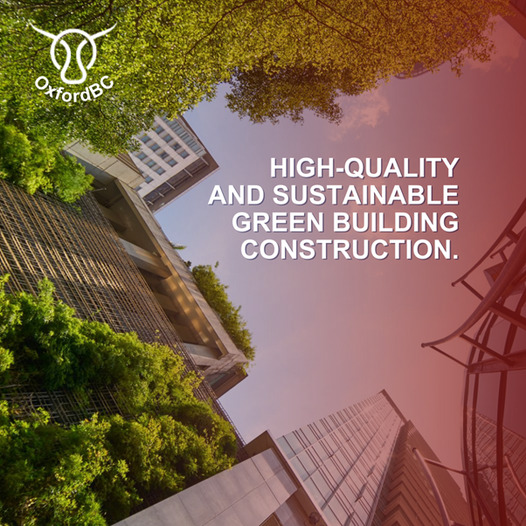
If you're not sure about the materials that you're using for your green building construction, you must check their credentials and look for Declare Labels.
A Declare Label reveals the product’s source location, the materials used to develop the product, and how the product is treated at the end of its life. Do you check the above-mentioned label before purchasing raw materials?
Website: www.oxfordbc.com
Email Id: [email protected]
Address: 112 Parkway Drive South Hauppauge, New York 11788
0 notes
Link
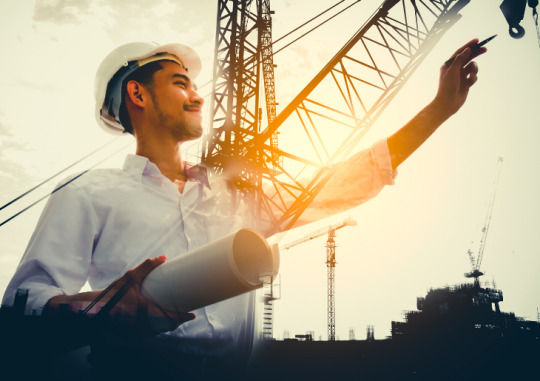
Sustainable architecture essentially means an attempt to minimize the negative environmental impacts of buildings through revamped efficiency and moderations in use of materials, energy, ecosystem, and developmental space at large.
The concept of sustainable architecture uses a sentient approach to energy and ecological conservation in designing of the built environment.
A sustainable or green building is a building that can improve or maintain:
1) The environment in that particular region
2) Conserving energy, resources recycling materials
3) The local and global ecosystems throughout the building life cycle
4) The quality of life & harmonizing within the local culture, tradition, climate
5) Reducing the amount hazardous substances to which human and other organisms might get exposed
Energy coherence over the entire life cycle of a building is the most essential aim of sustainable architecture. Various active and passive techniques are being used by architects to reduce the energy needs of buildings and expand their ability to capture or generate their own energy.
To cut back on cost and complexity, sustainable architecture prioritizes passive systems to take advantage of the location of the building with incorporated architectural elements, supplementing with renewable energy sources; fossiling out these resources in the future.
Site analysis can be used to optimize the use of local environmental resources such as ambient wind and daylight for ventilation and heating. Energy usage often depends on whether the building gets its energy on grid or off grid.
Off grid buildings don’t use energy provided by utility services. Adding to that, they have their own independent energy production. They use on site electricity storage storage while on grid sites feed in extensive electricity back to the grid.
Source: What is the concept of sustainable buildings?
0 notes
Link

From building placement and design to building demolition, green buildings increase the efficient use of resources, reduce waste by-products, and create healthier spaces for building occupants. More practically, here are 5 green building ideas that can help you create efficient and healthier spaces.
1. Frame it smaller
Bigger is not necessarily better. Smaller buildings require fewer resources to construct and less energy to maintain a comfortable indoor temperature.
2. Use a passive solar design
Passive solar designs rely on absorbing solar energy to heat structures in the winter and rejecting the same energy in the summer. Light rays reach windows in winter when the sun is low and are blocked in summer.
3. Design intelligently
Planting deciduous trees around your building can block the sun during the warmer months, but when the leaves fall off in winter, the sun's rays can reach your building and warm it up again.
4. Choose a “cool” roof
Dark roofs absorb heat and can reach temperatures approaching 200 degrees Fahrenheit. White or light-colored roofs reflect the sun's heat and reduce summer energy costs.
5. Install Energy Efficient Windows
Loss of energy in doors and windows is due to cracks, crevices and lack of grout, which can be easily repaired. But for truly energy-efficient windows, double or triple-glazed windows let air in to reduce heat transfer.
Source: What are some new ideas to implement for green building construction?
#greenbuildingtechnology#greenbuildingcompany#greenbuildingcompanyinLongIsland#greenbuildingservicesinLongIsland
0 notes
Link
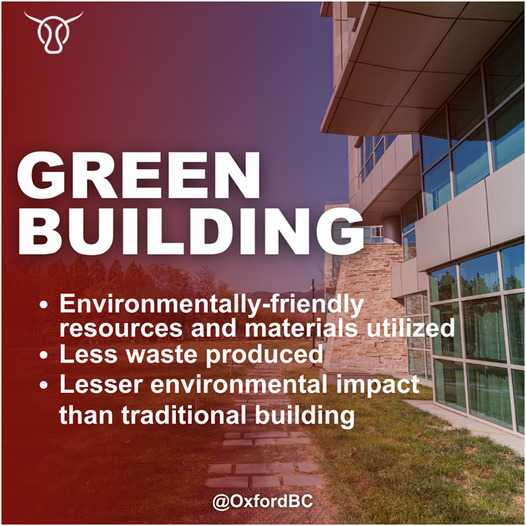
If you're not sure about the materials that you're using for your green building construction, you must check their credentials and look for Declare Labels.
A Declare Label reveals the product’s source location, the materials used to develop the product, and how the product is treated at the end of its life. Do you check the above-mentioned label before purchasing raw materials?
Website: www.oxfordbc.com
Email Id: [email protected]
Address: 112 Parkway Drive South Hauppauge, New York 11788
0 notes
Link
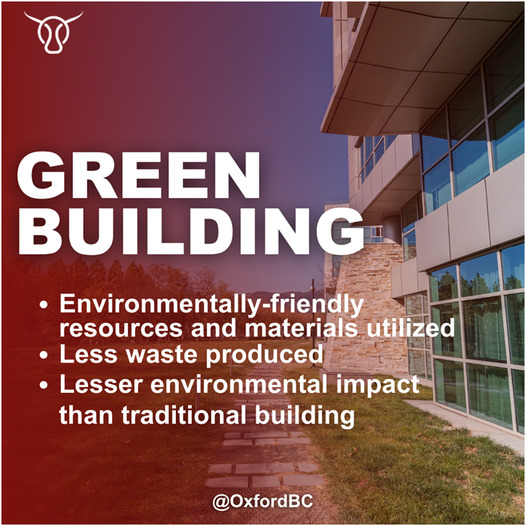
If you're not sure about the materials that you're using for your green building construction, you must check their credentials and look for Declare Labels.
A Declare Label reveals the product’s source location, the materials used to develop the product, and how the product is treated at the end of its life. Do you check the above-mentioned label before purchasing raw materials?
Website: www.oxfordbc.com
Email Id: [email protected]
Address: 112 Parkway Drive South Hauppauge, New York 11788
0 notes
Link
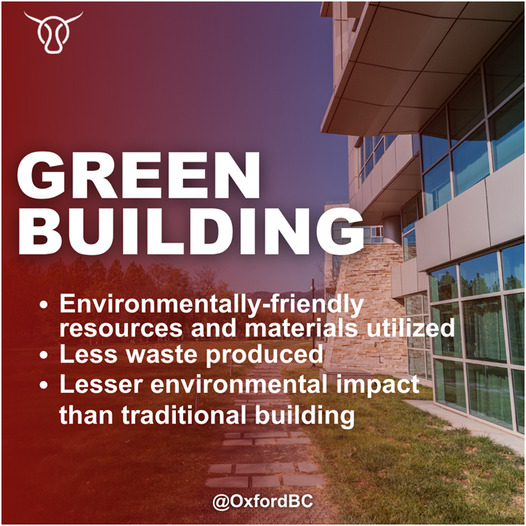
If you're not sure about the materials that you're using for your green building construction, you must check their credentials and look for Declare Labels.
A Declare Label reveals the product’s source location, the materials used to develop the product, and how the product is treated at the end of its life. Do you check the above-mentioned label before purchasing raw materials?
0 notes
Link
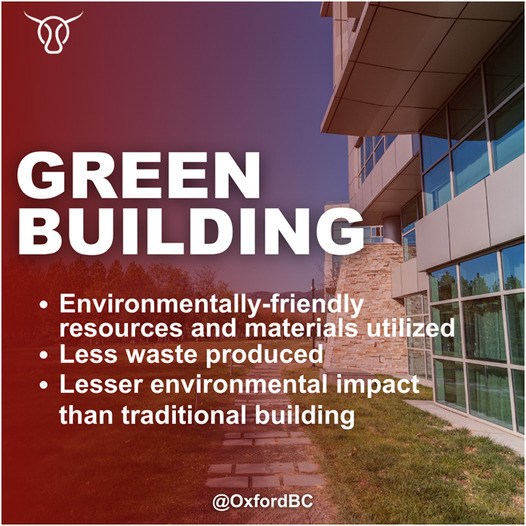
If you're not sure about the materials that you're using for your green building construction, you must check their credentials and look for Declare Labels.
A Declare Label reveals the product’s source location, the materials used to develop the product, and how the product is treated at the end of its life. Do you check the above-mentioned label before purchasing raw materials?
Website: www.oxfordbc.com
Email Id: [email protected]
Address: 112 Parkway Drive South Hauppauge, New York 11788
0 notes
Link
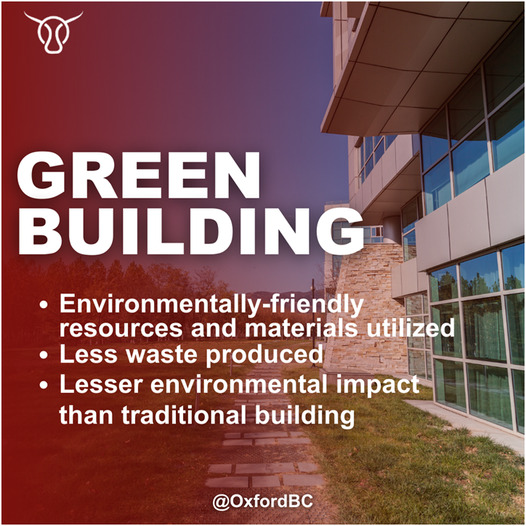
If you're not sure about the materials that you're using for your green building construction, you must check their credentials and look for Declare Labels.
A Declare Label reveals the product’s source location, the materials used to develop the product, and how the product is treated at the end of its life. Do you check the above-mentioned label before purchasing raw materials?
0 notes
Link
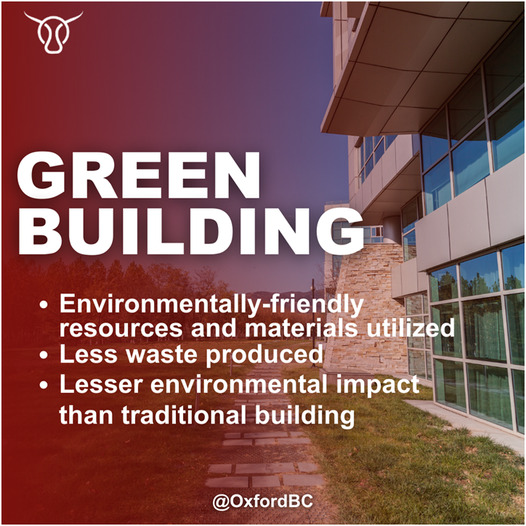
The technique of representing a structure that lowers resource use, waste, and negative environmental effects are known as a green building. It aids in improving occupant health and productivity while also minimizing a structure's life cycle cost. With climate change, green building is a viable alternative to the typical home and building construction process.
Are you thinking of getting a Green Building constructed? Oxford BC is ready to make your project a success while also assisting in creating a more sustainable future.
0 notes
Link

If you're not sure about the materials that you're using for your green building construction, you must check their credentials and look for Declare Labels.
A Declare Label reveals the product’s source location, the materials used to develop the product, and how the product is treated at the end of its life. Do you check the above-mentioned label before purchasing raw materials?
#GreenBuildingConstruction#GreenBuildingTechnology#GreenBuildingCompany#GreenBuildingCompanyinLongIsland
0 notes
Link
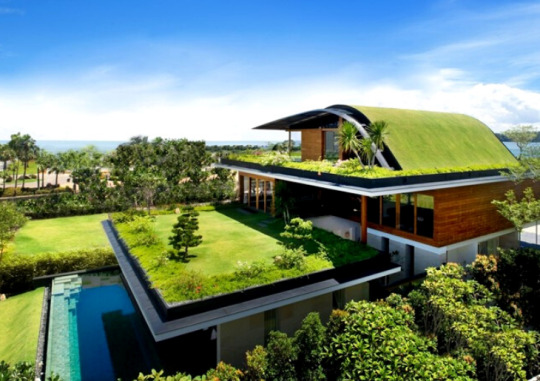
Every phase of construction like selecting construction materials, designing, structuring, etc., plays a vital role in the Green building construction process.
Green Building technology assures energy-efficient buildings, low emission carbon, and sustainable development. Switch to eco-friendly construction now.
#GreenBuildingTechnology#GreenBuildingCompany#GreenBuildingCompanyinLongIsland#GreenBuildingConstructioninLongIsland#OxfordBuildingCompany
0 notes
Text
Factors to Keep In Mind When Planning Your First Green Building
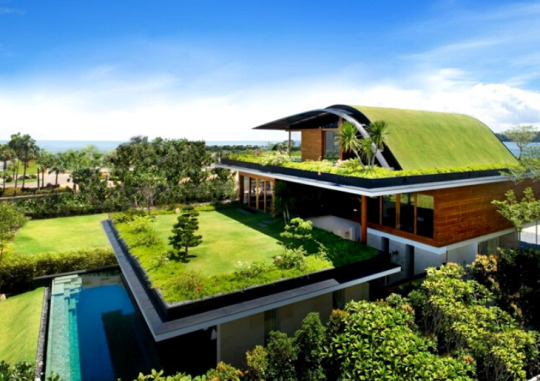
A green building enhances the positive impact on our environment with the help of its design, operation, and construction. It builds a healthy relationship between nature and construction, preserves its resources, and sustains the climate.
So, in today’s world, why not build something environment-friendly?
But planning your first green building can be tricky, so multiple factors should be kept in mind when doing so, such as:
(1) Select a Well-Qualified Builder/Architect for Your Green Building:
This is an essential first step — you must conduct a screening process to select from your preferred list of builders. It’s so important to perform your research on every builder to confirm they’re familiar and have experience in the type of build they’re submitting to you. A skilled and informed builder can quite beautifully structure your site in an environmentally friendly and resource-efficient manner.
(2) Set a Budget:
You should know how much you’re prepared to spend on your green building. Because if you don’t — then you could run into some trouble! Green building is an expensive investment, and setting a budget is a no-brainer. The construction process requires a considerable degree of time, and the prices of raw materials might fluctuate due to the same.
That is why having a budgeting margin is advisory. Consult with your builder, and be very frank with him.
The initial stage of planning necessitates a set amount of the budget. This is then when you can discuss and conclude the intricacies of design and construction for the entirety of the project.
(3) Suitable Building Spot:
This stage is the most challenging part of the construction process.
Now, you have to keep in mind that a green building is not just any construction site. Several factors have to be considered. And finding the perfect spot is one of them. The positioning and orientation of the building are to be kept in mind. The key is to optimize the cooling and heating requirements of the building, and for that — climate comes into play.
You should also ensure to focus on the direction of the sun and wind.
Solar Shading is essential in maintaining the overall temperature of the building.
Thus, when planning to construct a green building, such details, such as — the number of trees in the area, rainwater storage facilities, area for alternative energy source installation (for example, solar panels) — can create a significant difference.
(4) Select the Right Raw Materials:
Choosing appropriate raw materials for your green building is crucial. If done correctly, this step can reduce various negative impacts on the environment. So, when you select raw materials for your green building, make sure they are high-performing construction materials and environmentally friendly.
This process can reflect the quality of your structure. The interiors, maintenance, and durability — can all escalate if you opt for excellent engineered raw materials within your budget. This process is normally heavily influenced by the builder, who has experience in purchasing such materials.
(5) Promote Health and Environment:
Now that you have selected your raw materials, it is time for you to fabricate an innovative design.
Remember: Your design must promote a healthy, eco-friendly lifestyle. This step must be executed before the construction phase begins. So, make sure to discuss all these points with your builder.
Hence, do note down to create a spacious design with more windows that can ensure good air and natural lighting. Natural light can make your space look livelier than ever. If you have ear sensitivity or are constructing in a noisy neighborhood, get sound insulation installed.
Also, do invest in a proper waste management system. Try incorporating the formula of reduce, recycle and reuse in your green building. And ascertain various methods through which you can regulate water efficiency — make sure to have a water-conserving plumbing system installed. All these small steps will ensure that your building is eco-friendly and furnishes a healthy lifestyle.
Start planning your first green building now, as the entire plan can take plenty of time and brainstorming.
Outline a strategic plan that will ensure a sustainable system.
Green buildings are the future, so keep all these things in mind when planning your next residential build.Oxford Building Company is ready to turn this eco-friendly vision of yours into reality. Contact us here to get started.
Source: Factors to Keep In Mind When Planning Your First Green Building
0 notes